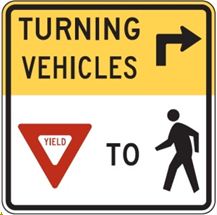We had a presentation from Mark Wagenbuur, who is the blogger of Bicycle Dutch. he provided an interesting perspective on Dutch cycling starting from the 1950s, it was the same as it was today. Cars were there in the 1950s, there was money and people able to afford the cars after WWII. As the country prospered, congestion increased and the parking was also congested. In the 1970s, it was similar to the U.S. with traffic engineers planning the cities. An overview of his presentation is available
here.
The presentation focused on how the Dutch got great cycling infrastructure starting back in the 1950s, where after WWII, there was a need to get back to moving freely after the Nazi occupation. Yet, there was also a growing automobile culture, that was partially halted by the oil embargo of 1973. This and the rise in fatalities of people and especially children were other motivating factors. This made way for protests in the streets of Amsterdam in 1975. Several examples were given of protests.
We want a SAFE Street - Wij Willen een Veilige straat.
Stop murdering children, safe footways and cycleways - Stop Kindermoord
Autorijden? Ga Nou Gauw Fietsen - Protest rides all over the country.
Cyclists Union was founded in 1975. The lonely cyclist struggles ahead, but no longer alone.
The community demanded genuine cycling policies and the resources to go with the change. The Cyclists Union wanted the government to give cycling a true role in the policies. There were two specific demands:
Separate slow and fast traffic (bike and motor)
Give cycling free routes through towns.
There was already a law on the Dutch government that says if you have more than 500 cyclists per day, you have to have separate cycling (rural conditions). So, in the 1970s this was a good place to start and he described the three strategies as:
Elimination of through traffic
Removal of parking
Prioritization of bus lanes
He then described the three simple requirements for mass cycling?
A bicycle
Parking on both sides of the trip
Good cycling infrastructure
In describing the standards for a bicycle, it has to be sturdy, upright, (could be heavy), chain case, fenders, wheel dynamo (no batteries), lock, etc. The parking has to be located well, the government mandates that the parking is indoor (ideal and now a requirement), with easy access to the street and where you don't have to carry it (remember it is a heavy bike).
Finally, Dutch design for good cycling infrastructure includes careful planning of the space in the City. Designing for people is key and auto traffic flow is secondary. There are planning policies that are used.
This is a particular example of those policies and how to move people in cities.
Bus stop and cycletrack design are great examples in The Netherlands. What they know is that bike lanes are not good enough. He wants protected intersections to be the main stream like it is in The Netherlands. The other important element of Dutch design is that the speed of the street is 50 km/hr speed limit for all streets with people cycling. Higher speed does not work without supporting infrastructure. In Houten, when there was a street design that was 100 km/hr and the police was asked to enforce a 50 km/hr speed limit, the police stepped in and decided to ask engineers to solve the problems. Engineers were set up a traffic calming function on the request of the City police. Police can't accomplish their job, if the design isn't supported.
The policies that have been used in the history of cycling include the following:
Dutch Bicycle Master Plan 1990-96 only time federal government has focused on the issue.
Sustainable Safety policy 1990-now
Design Manual for Bicycle Traffic (CROW) generally followed by municipalities.
The Dutch are very strict on their use of a road categorization that requires designation and there are three main classifications.
Through regional routes 130 to 80 km/hr - no cycling
Local distributing - collector roads - 50 km/hr - depending on traffic you would have physical or visible spearation (bike lane) - collector roads can not have parking or destinations.
Residential streets/places - Speed 30 km/hr (18 mph), no separation is needed.
Some municipalities have fought for a hybrid extra (destinations are the typical element that is added).
He used Houten as an example designed in the late 1960s as a cycling friendly city. Red lines can not be crossed by motor traffic. ring road all around the city, that provides circulation into the different parts of the City. Cyclists can not go anywhere. Cycling is almost always faster than the car.
He used Houten as an example of how to retrofit existing residential areas
1. Block off streets, narrow other streets with traffic calming.
2. 18 exit/entrance biking, 3 for cars (provide more options for bikes to avoid traffic)
He also cited that the Dutch closed down traffic on a Sunday as an experiment for placemaking in city centers
Where did the cars go? In the City Center of Utrecht, changes were made so it was impossible to go through the City. Now, the traffic stays out on the fringes. No through traffic in the main area. Simple fences were used and buses allowed through. Cameras are providing the enforcement.
Downgrading former arterials are key to the implementation
Traffic dispersion happens, but don't worry about chasing all of that traffic.
What can other countries learn? They should do the following as others are working on this issue too:
Placemaking is happening.
Complete streets, including cycling infrastructure
Protected intersections
Designing a network.
Placemaking - Prague, Paris, and NYC
Complete streets - Sydney, Chicago
Protected Intersetions - SLC, Davis, Austin, and Boston.


























